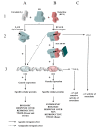Raloxifene: mechanism of action, effects on bone tissue, and applicability in clinical traumatology practice
- PMID: 19516920
- PMCID: PMC2687107
- DOI: 10.2174/1874325000903010014
Raloxifene: mechanism of action, effects on bone tissue, and applicability in clinical traumatology practice
Abstract
Raloxifene, a member of the class of selective estrogen receptor modulators (SERM), reproduces the beneficial effects of estrogens on the skeletal systems, without the negative effects estrogens on breast and endometrium. This is a review article summarizing its mechanism, effects on bone and its applicability in traumatology clinical practice. In postmenopausal osteoporosis, this drug has been proven to decrease accelerated bone turnover, increase bone mineral density (BMD), and to structurally recover bone, decreasing the risk of vertebral fractures and the risk of non-vertebral fractures in patients with previous, severe vertebral fractures. Moreover, raloxifene appears to lower the risk of invasive breast cancer. Raloxifene would be efficacious in the prevention and treatment of postmenopausal osteoporosis.We can therefore conclude that raloxifene would be efficacious in the prevention and treatment of postmenopausal osteoporosis, while reducing the risk of breast cancer when used at the indicated dose of 60 mg/day and with a low incidence of side effects.
Keywords: Raloxifene; SERM; osteoporotic fracture.; postmenopausal osteoporosis.
Figures
References
-
- Muñoz-Torres M, Alonso G, Mezquita RP. Prevención y tratamiento de la osteoporosis. Endocrinol Nutr. 2003;50:1–7.
-
- Hillard TC, Whitcroft SJ, Marsh MS, et al. Long-term effects of transdermal and oral hormone replacement therapy on postmeno-pausal bone loss. Osteoporos Int. 1994;4(6):341–8. - PubMed
-
- Kanis JA, Stevenson JC. Effect of estrogen therapy on bone density in elderly women. N Engl J Med. 1994;330(10):715–716. author reply. - PubMed
LinkOut - more resources
Full Text Sources



